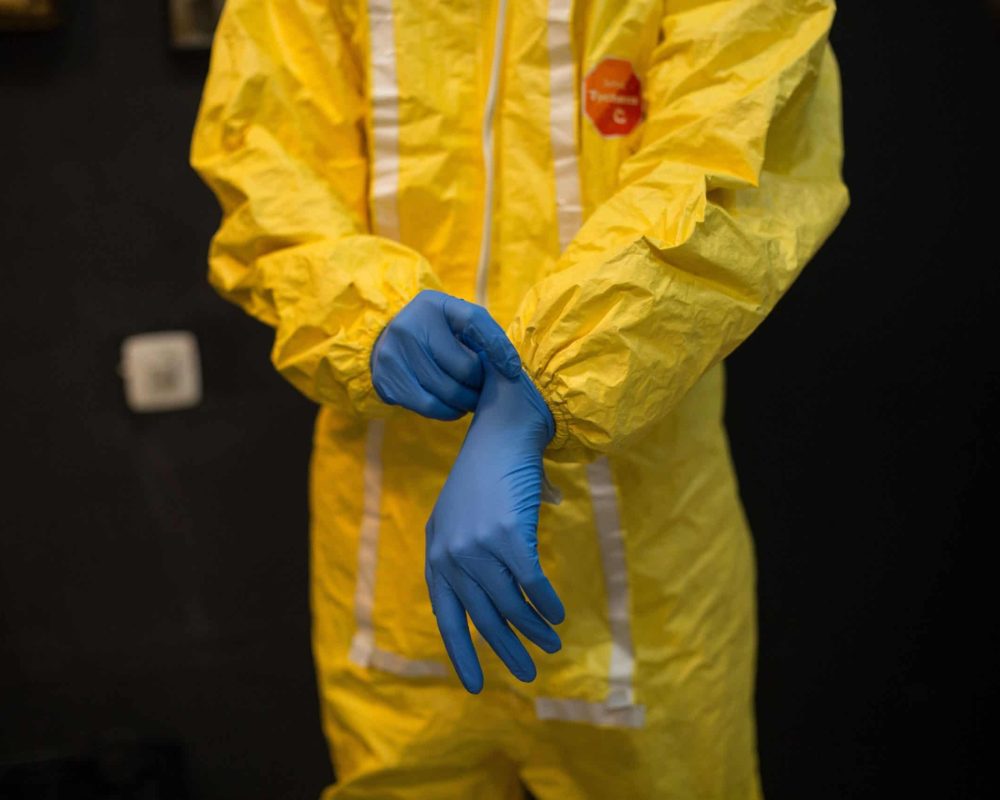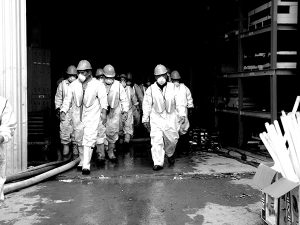Precise ATP Testing for Effective Hygiene and Hygiene Surveillance
Precise ATP Testing for Effective Hygiene and Hygiene Surveillance
Blog Article
Expert Biohazard Cleansing and Decontamination for Blood, Bodily Fluids, and Hazardous Products
The potential health dangers linked with exposure to biohazards emphasize the important demand for precise handling and thorough cleaning. As we navigate the elaborate landscape of biohazard cleaning, recognizing the nuances of guidelines, compliance, and the customized tools at play becomes essential in making certain a thorough and safe purification procedure.
Health Dangers of Biohazard Direct Exposure
Exposure to biohazards positions significant wellness risks that can cause extreme repercussions for people and neighborhoods alike. Biohazards encompass a variety of biological compounds, consisting of blood, physical fluids, mold and mildew, microorganisms, infections, and various other potentially infectious products. When individuals enter call with these biohazards, whether with mishaps, incorrect handling, or ecological direct exposure, they deal with the danger of having significant illnesses or illness.
One of the main health risks connected with biohazard exposure is the transmission of contagious conditions. Bloodborne pathogens such as HIV, hepatitis B and C, and different bacteria can be present in biohazardous materials, posing a straight threat to human health and wellness. Breathing in air-borne biohazards like mold spores or entering into contact with contaminated surface areas can also cause respiratory system issues, allergies, and other unfavorable wellness impacts.
Moreover, biohazard direct exposure can have long-term health ramifications, with some diseases manifesting years after the initial get in touch with (Blood Cleanup). Consequently, it is essential to focus on correct biohazard cleaning and decontamination to minimize these health and wellness dangers and guarantee the safety of communities and people

Specialized Educating for Biohazard Clean-up
When it pertains to taking care of biohazard clean-up effectively and safely, specialized training plays an essential duty in making certain correct decontamination treatments are adhered to. Biohazard clean-up needs certain knowledge and skills to efficiently mitigate dangers connected with bloodborne pathogens, bodily fluids, and harmful materials. Specialists trained in biohazard cleanup go through strenuous direction on how to safely deal with, get rid of, and dispose of biohazardous products to stop contamination and direct exposure.
Specialized training for biohazard clean-up covers a variety of important topics, including appropriate personal protective devices (PPE) usage, bloodborne microorganism recognition, purification methods, and dangerous waste disposal protocols. People learnt biohazard cleanup are furnished with the essential proficiency to examine contamination degrees, identify prospective threats, and execute suitable cleanup treatments in conformity with regulative criteria.
Constant training and education and learning are critical in the field of biohazard clean-up to remain upgraded on the current purification innovations, safety procedures, and policies. By investing in specialized training, biohazard cleaning professionals can efficiently react to emergency situation cleanup circumstances and protect both public wellness and the environment.
Importance of Appropriate Decontamination Strategies
Making use of appropriate purification techniques is critical in biohazard clean-up to efficiently minimize and remove hazardous products health dangers. Effective decontamination not only makes certain the removal of visible traces of blood, bodily liquids, and other biohazards but additionally targets invisible pathogens that might present significant wellness dangers otherwise appropriately eliminated. By following stringent purification procedures, trained experts can significantly lower the risk of exposure to hazardous microorganisms, infections, and germs that could result in infections or diseases.
Appropriate purification techniques involve using specific equipment and disinfectants that are specifically made to counteract biohazards properly. Detailed cleaning and disinfection of infected locations are important to avoid the spread of virus and make certain a safe setting for occupants. In addition, the right disposal of biohazardous waste complying with purification procedures is vital in preventing contamination of other surfaces or people.

Devices and Devices for Safe Cleaning
The correct devices and devices play a critical duty in making certain the risk-free and reliable clean-up of biohazardous materials. When managing blood, bodily liquids, or harmful materials, biohazard cleansing specialists count on specialized equipment to lessen direct exposure risks and completely sanitize the damaged location. Personal protective equipment (PPE) such as gloves, coveralls, masks, and goggles are important to secure against direct contact with possibly transmittable products. Additionally, biohazard cleaning sets consisting of anti-bacterials, absorbing products, and biohazard bags are used to safely get rid of and consist of of infected items. Blood Cleanup.
Advanced cleansing tools like hospital-grade disinfectants, HEPA-filtered vacuum cleaners, and fogging equipments are utilized to sanitize surface areas and get rid of Look At This biohazards properly. Specialized devices such as sharps containers and biohazard waste disposal bins are used to safely take care of sharp objects and biohazardous waste materials. By using the right equipment and devices, biohazard cleaning specialists can ensure a comprehensive cleanup process that prioritizes safety and security and minimizes health and wellness dangers for both employees and occupants of the affected room.
Rules and Compliance in Biohazard Cleaning
Appropriate adherence to guidelines and compliance criteria is paramount in biohazard cleaning to make certain the safety and security of both workers and the atmosphere. Federal government useful site agencies such as OSHA (Occupational Safety and Health And Wellness Administration) and the EPA (Epa) have actually established particular guidelines for biohazard cleaning procedures to reduce health and wellness risks and ecological contamination. These guidelines cover a variety of elements consisting of the handling, transportation, and disposal of biohazardous products, as well as the necessary training and safety devices required for workers involved in the cleanup process.
Biohazard cleansing companies must stay current with these regulations to assure that their procedures meet the required safety requirements. Failing to abide by these guidelines can cause extreme consequences, including penalties, lawful activity, and threatening the health of people and the atmosphere. By following stringent laws and conformity procedures, biohazard cleaning business can properly reduce threats and guarantee a risk-free and comprehensive cleanup procedure for all parties involved.
Final Thought
Finally, biohazard cleansing and decontamination call for specialized training, appropriate methods, and adherence to policies. Exposure to blood, bodily fluids, and hazardous products poses significant wellness risks, making it important to make use of the best tools and devices for risk-free cleanup. By complying with strict procedures and guidelines, specialists can successfully reduce the threats linked with biohazard direct exposure and make certain the security of both themselves and others.
As we navigate the elaborate landscape of biohazard clean-up, recognizing the nuances of laws, conformity, and the customized equipment at play comes to be vital in guaranteeing a risk-free and extensive decontamination process. (Blood Cleanup)
When it comes to taking care of biohazard cleanup efficiently and safely, specialized training plays a fundamental duty in making certain proper decontamination treatments are adhered to.Making use see this site of proper decontamination strategies is important in biohazard clean-up to effectively minimize and remove harmful materials wellness threats. In addition, biohazard cleaning kits including disinfectants, absorptive materials, and biohazard bags are used to securely get rid of and consist of of infected products.
Government firms such as OSHA (Occupational Security and Wellness Management) and the EPA (Environmental Defense Firm) have developed certain standards for biohazard cleanup treatments to lessen health dangers and environmental contamination.
Report this page